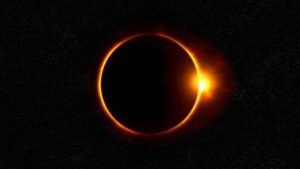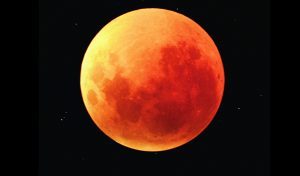Solar Eclipses

Lunar Eclipses

A lunar eclipse occurs when the moon is at opposition to the sun and passes through the earth’s shadow. Because of this, a lunar eclipse will always happen during a full moon. Lunar eclipses were seen by some Aboriginal groups as an omen that a relative was in danger or that someone on a journey had become sick or was injured or killed.
The Lardil of Mornington Island viewed the Moon as a greedy and selfish man who steals food and gorges, getting fatter and fatter (waxing Moon). As punishment for this action, he is cut into pieces, getting thinner (waning Moon) until he dies (new moon). The new moon, along with the sudden and apparent ‘death’ of the Moon during a lunar eclipse, served as a warning to younger generations about the Moon’s selfish nature, reinforcing the taboo of food theft and gluttony.
During a total lunar eclipse, the moon will turn dark before transforming to a reddish hue. Because the light is being refracted by the Earth’s thick atmosphere, the longer wavelengths of light dominate, giving the Moon this colour. The colour is noted by some Aboriginal groups who believed a lunar eclipse revealed the Moon-man’s blood.
Learn More
Blogs
- Solar Eclipses (Part I) (Aboriginal Astronomy Blog)
- Solar Eclipses (Part II) (Aboriginal Astronomy Blog)
- Lunar Eclipses – Omens of Death? (Aboriginal Astronomy Blog)
Published Research
- Hamacher, D.W. and Norris, R.P. (2011) Eclipses in Australian Aboriginal Astronomy. Journal of Astronomical History and Heritage, Vol. 14(2), pp. 103-114.
